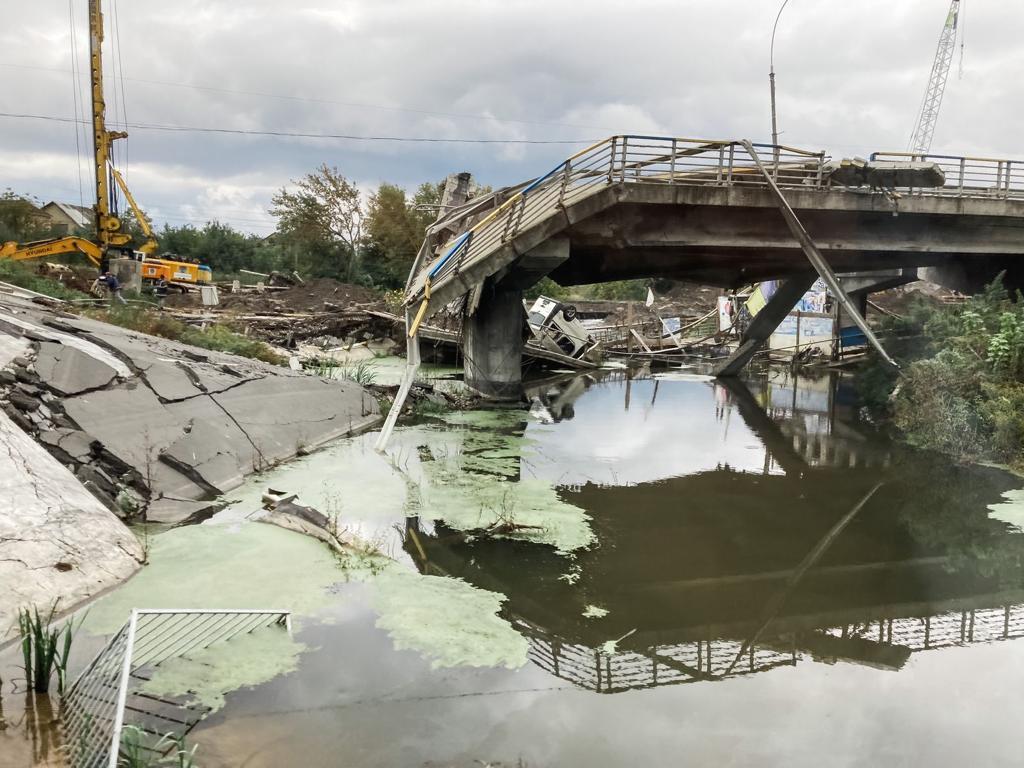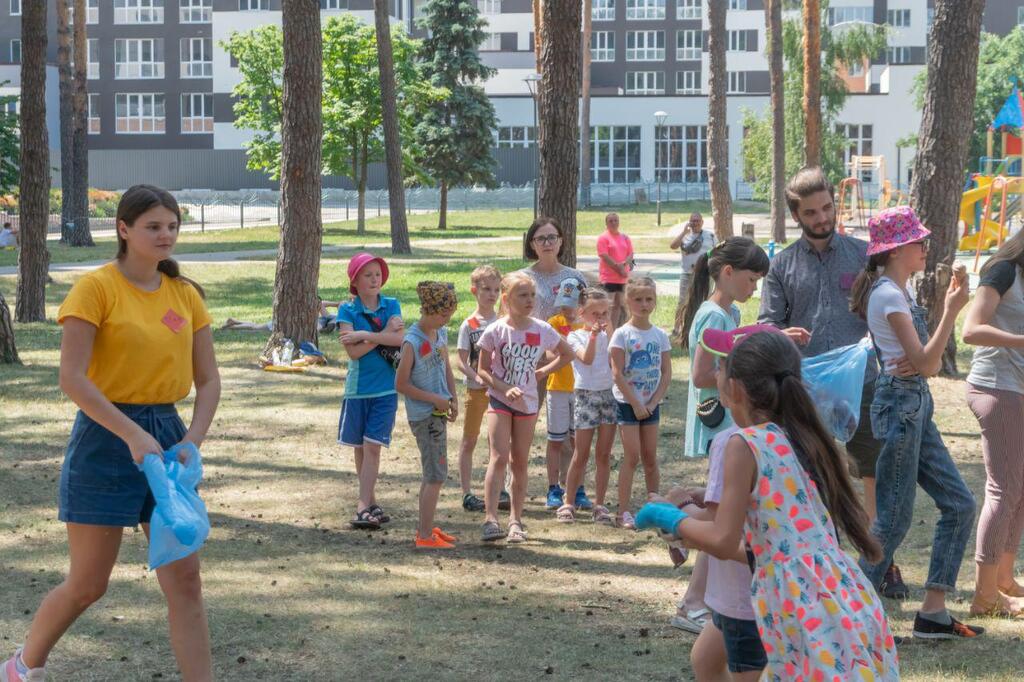The war in Ukraine has been going on for 7 months now. And just in these days, a delegation of Sant’Egidio has gone to Ukraine from Italy, to support the intense humanitarian action that the Ukrainian Communities have been carrying out since the beginning of the war. In the words and images that we receive from those places, we read stories of pain, but we also see the signs of hope that the Communities of Sant’Egidio are trying to transmit with tenacity.
“It is not without emotion to return to Kiev after seven months of war. The city has resumed a life that is in many ways normal. Traffic, people in the streets, the metro travelling at the usual pace, the schools open. Of course there are fewer people than usual, less traffic: many Kievians are still refugees abroad or in other regions of Ukraine.
War, however, continues to be a constant presence in everyday life. Air-raid alarms remind people of the possible dangers, make public transport stop, premises close, schoolchildren go down to the shelters. In various places you notice sandbags piled up to protect buildings or cheval-de-frise at the sides of roads.
.jpeg)
Along the routes into the city, you have to pass through fortified checkpoints. But above all, the weeks of siege suffered by the city at the beginning of the war have left a vivid memory in the people who do not fail to recount what they experienced. It is a memory that unites everyone and that everyone seems to need to talk about: from the elderly people you meet on the street to the young people, from taxi drivers to those with public responsibility.
The Community in Kiev faced the challenges of the city during the war. Yet it has never stopped being close to its poor friends, even in the most difficult weeks: street food distributions to the homeless and poor elderly continued in three neighbourhoods of the city, Troeshina, Darnitsa, Goloseevo, as well as in the centre, in Majdan and at the station.
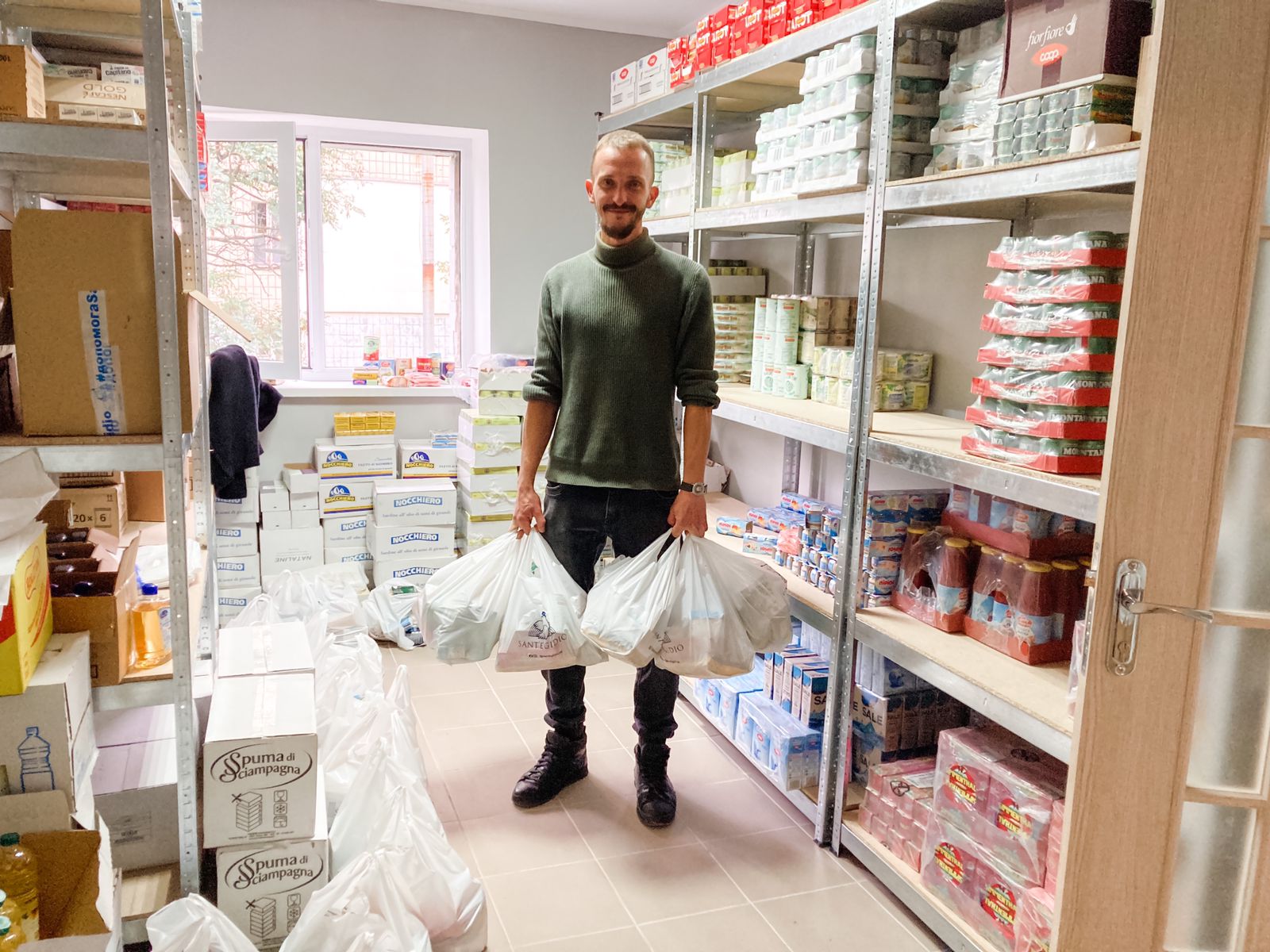
The two flats housing homeless people have continued to be 'warm homes' of welcome; the headquarters of the Youth for Peace, before being hit by a missile, gave shelter to some 20 people and today, almost completely rehabilitated, is about to resume its life. Food aid and medicines have regularly arrived at two large institutions for the elderly; some elderly people and people with disabilities were evacuated in March and are now housed by the community in family homes in Lviv and Ivano-Frankivsk: in wartime a dream has paradoxically been realised, and it is meant to be a model for a new future, also in Kiev where the cohabitations will be relocated when possible.
But new questions challenge the youth and adults of the Community. New locations have been opened and new services have sprung up.
In Troeshina, a large suburban district of 300,000 inhabitants, where the Community took its first steps in the early 1990s, community headquarters was opened.
It is in the centre of the neighbourhood in a building originally used for technical services. Renovated by the people of the Community, twice a week it welcomes refugees from war zones: it is a distribution centre for food parcels and clothing. In less than a month, 600 parcels have already been distributed. Many are mothers with children. The smiling welcome and willingness to listen open up a much-needed space of trust: the stories of the suffering of war, the tears, the gestures of closeness and consolation establish a new relationship of trust. A number of refugee women joined the solidarity effort and started coming to the centre to lend a hand in welcoming, preparing packages, comforting.
.jpeg)
In recent months, quite a few refugees have arrived in Kiev from the eastern and southern regions of the country, where there is fighting. 120,000 are the officially registered refugees, but the figure is probably around 300,000. They live in the city and its suburbs, either with relatives or acquaintances, or housed in flats left empty by Kievians who have left the city; others rent houses. Most have been left without a salary, struggle to find a new job, while their savings are dwindling.
Finding ways to be close to them, to answer their questions is a priority for the Community in Kiev. So it was decided to open another location in the Darnitsa district to make it another space to welcome refugees. The beautiful, bright, colourful-walled premises, which used to house a children's centre, are close to the metro station. Since mid-August they have been welcoming refugees twice a week and the centre is about to open a third day. Young people from Kiev and refugee women are involved in a joyful and active atmosphere. In one month, 1,200 food parcels were delivered. An atmosphere of serenity welcomes the people. They come from Kharkiv, Lisichansk, Mariupol, Cherson, Donetsk, Mikolaiv, cities whose names we have come to know in these months of war. The prayer at the end of the day gathers so many, united by the need for guidance.
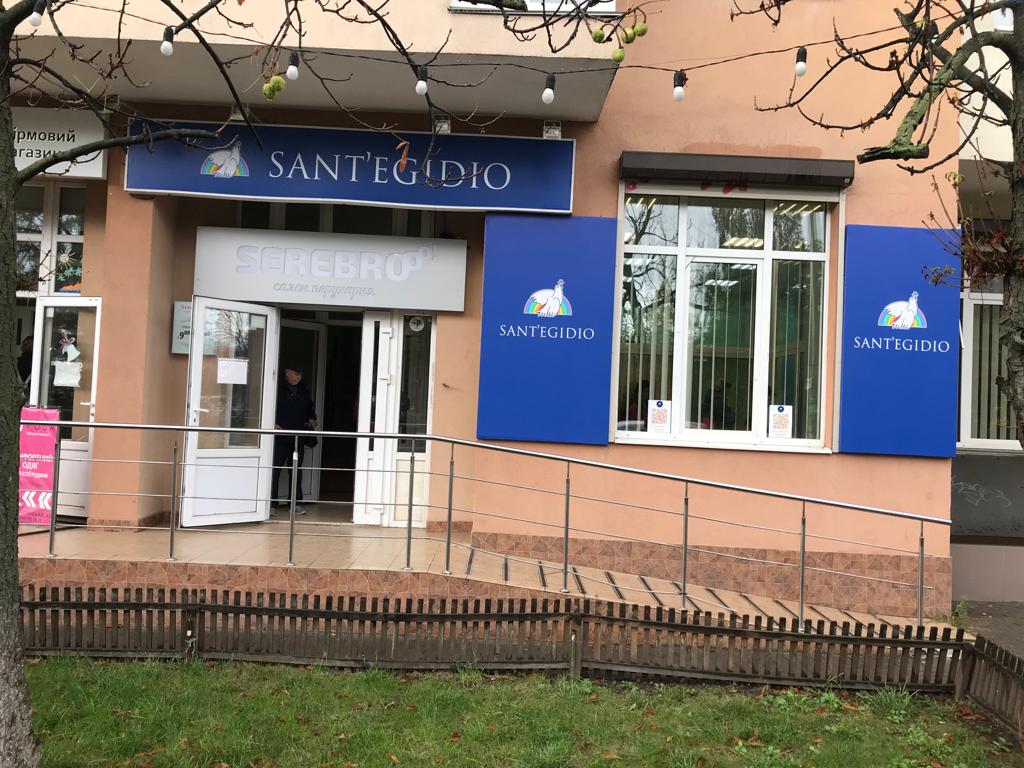
Irpin' is a residential centre of 60,000 inhabitants, a suburb of Kiev. A pretty town nestled in a pine and oak forest, with well-kept parks, places of culture, sculptures in the streets. The genteel ambience has been disfigured by the extensive destruction caused by bombing and fighting during the Russian army's advance towards Kiev. The visit to Irpin' is striking: it impresses the war's force of destruction, its madness. Around 400 people were killed here.
.jpeg)
Some people from the Community living in Irpin' experienced the suffering of those days: the time spent in cellars or shelters while the fighting was going on, the risky escape to Kiev, the flat of one of them destroyed by rockets. It was precisely in Irpin' that Sant'Egidio wanted to give a sign of hope. Beginning with the children, who have particularly suffered the impact of the war. Intrigued and frightened. In June the Youth for Peace started the School of Peace in Irpin' with a big party for children and families in one of the city's many parks: a place of serenity and peace, in the midst of so much pain, a vision of a new future.
.jpeg)
The Community in Kiev resists war, imagines and begins to build a new future, lays the first stones of the building of peace, the urgency and expectation of which are ever more pressing.
The emotion of our arrival has become the hope and confidence with which we leave Kiev.”














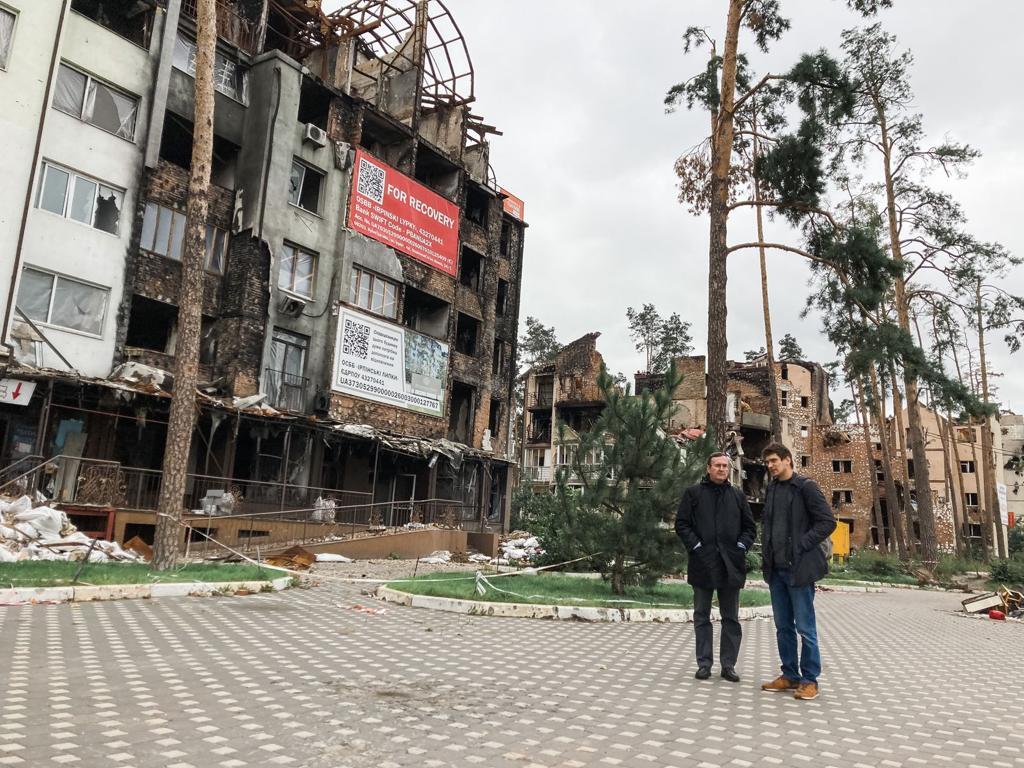
.jpeg)

.jpeg)
